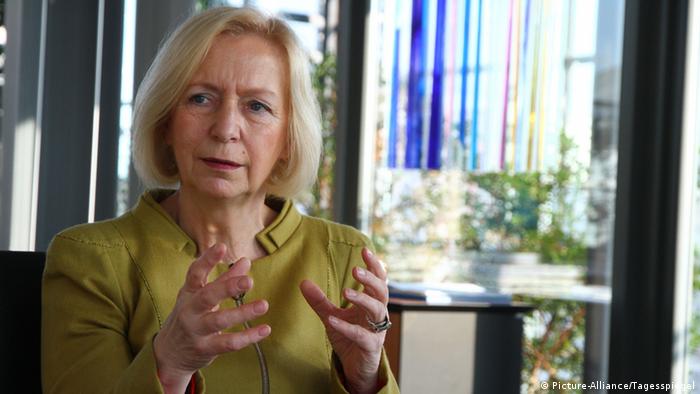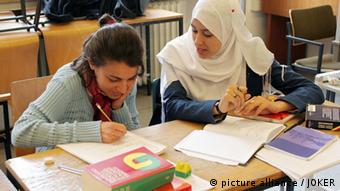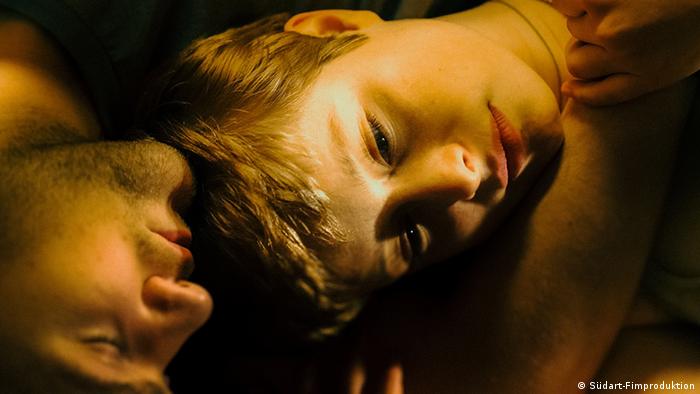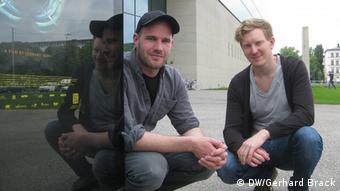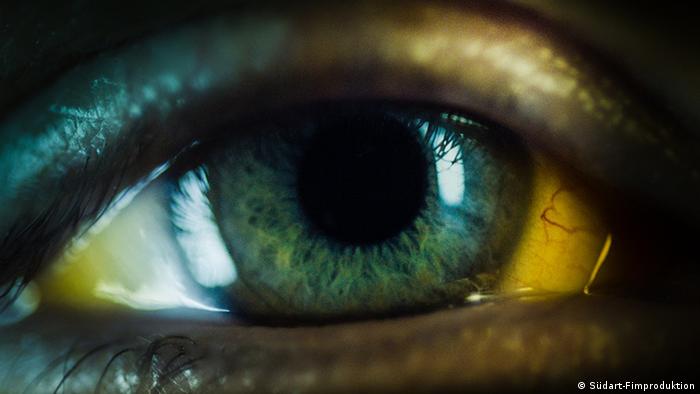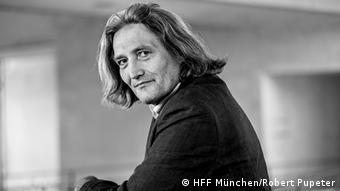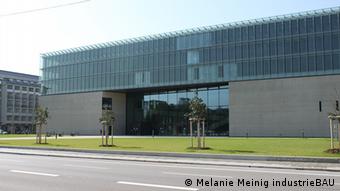GÖRLITZER PARK, a patch of grass and concrete, has a seedy air. Its
tall walls are covered in graffiti. Near the entrances, young African
men stand around hassling bystanders, asking if they want to buy some
“kiffen”.
(kiffen, as verb = to smoke marijuana --rsb) Yet in many respects, the “drug park”
(as locals in Kreuzberg,
a trendy district of Berlin, often call it) does not live up to its
ugly reputation. On a Saturday afternoon, it is mostly full of
20-somethings sitting around on the grass in groups sipping coffees and
beers. Young parents pass by with pushchairs. University students on
picnic blankets peer into their textbooks.
Over the course of an hour or
so, not a single one of the drug dealers in view seems to make a deal.
For most of the locals, they are a hassle—not a service.
Few European cities do youth culture and hedonism better than Berlin.
Young people flock—or, if truly cool, just drift—here from all over the
world. The nightlife runs until dawn, techno beats flood its streets.
Yet as with Görlitzer Park, the wild appearance belies reality. The
city’s middle-aged artists and musicians complain that its young
hipsters are taking the edge out of its nightlife by trying to make
money out of it. Their entrepreneurialism is driving up rents. “The city
of heroin addicts, David Bowie and Iggy Pop has disappeared,” says a
Berliner who was not yet born when the Thin White Duke came to stay.
In
its place is a town where people come to study, work and boost their
creative careers, not just party.
Berlin is still an unusual city; the temperance of its youth is not.
In 2002 just 13% of German teenagers had never had an alcoholic drink;
by 2012, that figure had risen to 30%. Among 18- to 25-year-olds, the
proportion drinking at least once a week has fallen by a third since the
early 1990s. Cannabis use has dropped, too, and the number of deaths
attributed to the use of illegal drugs has fallen by half since 2000.
Similar trends are seen across the Western world.
Stay clean tonight
Take Britain. In 2008
Time magazine described
Britain’s youth as “unhappy, unloved and out of control”; a nation
gripped by an “epidemic of violence, crime and drunkenness” was scared
of its feral youth. Polling by Barnardo’s, a charity, found that 54% of
people thought that children were “beginning to behave like
animals”—perhaps because, in television programmes such as “Skins” and
films such as “Kidulthood”, hoodie-wearing teenagers occupied themselves
largely with cocaine, wild sex and stabbing one another. David
Cameron—now prime minister, then leader of the opposition—denounced a
“broken society”, arguing that “we have seen a decades-long erosion of
responsibility, of social virtue, of self-discipline, respect for
others, deferring gratification instead of instant gratification.”

Mr Cameron’s claim, hyperbolic then, has since become ludicrous. In
2007, 111,000 children aged between 10 and 17 were convicted or given a
police caution for a first offence in England and Wales. By last year,
that had fallen to just 28,000 (see chart 1). The teenage murder rate
quietly plunged, and London’s knife crime epidemic of the summer of 2008
proved a blip, much like the riots of 2011. As elsewhere, drug use by
the young is falling (see chart 2).
Perhaps most remarkably, Britain’s notoriously surly youths are
getting more polite: according to one government survey, those born in
the early 1990s are less rude and noisy in public places than previous
cohorts were at the same age. “People are still being young, but they’re
recognising there are boundaries,” says one youth worker in Hackney, a
borough of London long known for its high crime rate.
In America, the proportion of high-school students reporting
“binge-drinking”—more than five drinks in a single session—has fallen by
a third since the late 1990s. Cigarette smoking among the young has
become so uncommon that more teenagers—some 23% of 17- to
18-year-olds—smoke cannabis than tobacco. Over the past ten years
pot-smoking has increased, a bit, among these older teens; but even
though now legal in some states (see page 35) its prevalence is still
far lower than in the 1970s, when Barack Obama was a member of his
high-school “choom gang”. Use of other recreational drugs has fallen
sharply. Dr Wilson Compton, the deputy director of the National
Institute on Drug Abuse, says that perhaps the most worrying trend in
young Americans’ drug habits is the increasing abuse of
attention-focusing pills such as Ritalin by students keen to improve
their performance.
Teenage kicks of other sorts also appear to be on the decline. “Teens
are waiting longer to have sex than they did,” according to a report on
young Americans from the Guttmacher Institute, a think-tank. America’s
teenage pregnancy rate is half what it was two decades ago (see chart
3). Britain has experienced a lesser decline. Most mainland European
countries never saw the high rates of teenage pregnancy that America and
Britain saw in the 1980s and 1990s, but they too have fewer expectant
youngsters than they did.
(It's awesome that our teen birth rates have fallen considerably! But still, why are they so ridiculously high when compared to Germany's? --rsb)
Teenagers appear not just to be waiting longer for sex, but also
by-and-large to be being careful about what they get up to once they get
started. According to data from the European Centre for Disease
Monitoring and Control, across the European Union (EU) they are the only
age group to be diagnosed with fewer sexually transmitted diseases in
recent years.
You never leave your room
This sudden outbreak of restraint is doing havoc to businesses which
thrive off youthful excess. “Kids these days just want to live in their
fucking own little worlds in their bedrooms watching Netflix and
becoming obese,” fumes a barman in Leeds, a northern English city. In
France and Spain bars and cafés have been closing in huge numbers,
especially in provincial towns. In Faliraki, a Greek island resort where
locals once so despaired of young drunk northern Europeans vomiting
everywhere that they banned pub crawls, some are now desperate for the
tourists to come back.
The media, too, are struggling to cope with the rising temperance of
youth. Television stations aimed at young people have dropped programmes
that glamorise rebellion and high-living, says Christian Kurz, of
Viacom, a media company which owns MTV. More and more teenagers are
turning to YouTube for entertainment. Young Germans use it to watch
bawdy comedy shows made by other teenagers, filled with stupid jokes
and—unsettlingly for leftish parents worried about commercialism—lots of
product placement. German kids seem to want to grow up to make money,
one father suggests, looking slightly unnerved.
What is behind this generation of hard-working, strait-laced kids? It
is hard to pin down any single explanation. Lots of interlinking
factors contribute to social trends, and the changes are neither uniform
within countries nor between them. In most countries there are areas
where teenage crime is high. In a few there is no overall trend to
temperance: drug-taking and youth violence both appear to have increased
in France in recent years. In America, heroin has staged a comeback in
some rural areas, largely as a by-product of prescription-drug abuse.
The European School Survey Project on Alcohol and Other Drugs (ESPAD), a
cross-national survey, finds that although binge-drinking has fallen
among young people in most European countries, it had gone up a lot
among children in Cyprus and Greece. But there are some factors common
to most countries in the rich world which may help to tie the experience
of teenagers in Auckland to that of those in Amsterdam.
In many countries, shock at the earlier extent of youthful hedonism
and disorder has led to dramatic attempts to curb it. In Britain
anti-social behaviour orders—a judicial sanction for disruptive conduct
that falls short of criminality—were widely used against the rowdy, and
worse, in the 2000s. In Spain and Italy drinking in the streets has been
met with ferocious policing in recent years—in central Madrid an al
fresco swig of beer can get you a €500 ($680) fine. In Germany many
states have started sending out teenagers to test whether shops and bars
are selling alcohol to people too young to buy it. Australia has put
heavy taxes on teen-friendly alcopops.
But such policies are hardly the whole story; there are much bigger
trends. The generations known for rebellion and rule-breaking were large
in comparison to the populations of the time, thanks to the post-war
baby boom and its “echo” boom in the 1970s and 1980s. They grew up in
young societies. Today’s youth by contrast are few in number and are
growing up in ever older societies. In Germany, for example, the median
age is now 46, and increasing about three months every year.
Not sure if you’re a boy or a girl
Growing equality between young men and women may also be having an
effect. For a while, this appeared to be driving bad behaviour: in both
Europe and America increases in binge-drinking and drug-taking during
the 1990s and early 2000s were driven more by young women rather than
men. Yet the rise of ladettes—a 1990s British term for brash young women
who supposedly liked to get blind drunk and misbehave as much as
men—has petered out. Data from ESPAD show that in most European
countries both boys and girls have stopped drinking and taking drugs as
much in recent years. Adult data from Britain shows a similar trend. A
generation that enjoys greater gender equality than any before may as a
result be putting less value on anti-social teenage machismo.
As well as being more supportive of young women, most Western
societies are also less white than before. Although prejudice, and
patterns of policing, might lead people to think otherwise, surveys show
that in most Western countries people from minorities are less likely
to drink or use hard drugs: 17% of non-Hispanic white Americans admit to
having tried cocaine, compared with 10% of blacks and 11% of Hispanics.
By 2020 more than half of those under the age of 18 in America will be
black, Hispanic or Asian; as the country becomes less white, it seems
likely to become more responsible. In Europe the fact that a rising
proportion of the young are Muslims is clearly part of the effect.
Added to these social trends are economic ones. The transfer of
unskilled jobs to developing countries and of menial jobs to immigrants
has put a new premium on education: today’s rich-world youth has far
more schooling than previous generations. Across the OECD, a club of 34
mostly rich countries, enrolment of 15- to 19-year-olds in education
increased by 11 percentage points to 83% between 1995 and 2011. Among
adults in their 20s participation in higher education has increased by a
third. Young people who are studying rather than in paid employment
have less money for hedonism.
That has not always, in the past, made universities particularly
clean and sober places. But today’s students have more at stake than
previous college kids. American tuition fees have increased at a rate of
roughly 7% per year since the 1970s, and now average $30,000 at a
private university. That is a lot to spend on just getting high and
laid.
In many countries, an increasing number of these students—and of
young people in general—still live with their parents, who tend to keep
careful watch on their spending and living habits. According to
Eurofound, an agency of the EU, almost half of Europe’s young adults now
live with their parents. In America the share of people sharing their
homes with their adult offspring is the highest it has been since the
1940s. Fiona Measham of the University of Durham, who studies the
intoxicant-related habits of people in British nightclubs, says that she
has noted that clubbing is now more of a luxury good than a way of life
for British teenagers. And it surely helps that there is plenty else to
do: video games and social networking indulged in in bedrooms are far
better entertainment than cheap cider and cigarettes consumed at bus
stops.
Right on mother
Yet perhaps the best explanation for this youthful self-control is
not the role parents play in young adults’ lives today; it is the way
they brought those young adults up. A combination of government
initiatives, technology, social pressure and reaction against the
follies of the past has improved parenting dramatically.
The amount of time parents devote to child care has increased
significantly (see chart 4). Today, working mothers spend almost as much
time on child care as stay-at-home mothers did a generation before.
Data from the Multinational Time Use Study—a collection of surveys from
20 countries—shows that in 1974, mothers without jobs typically spent
just 77 minutes with their young children each day, while employed
mothers spent about 25 minutes. By 2000 that had risen to 161 minutes
and 74 minutes respectively. According to William Strauss and Neil Howe,
authors of various studies of the “millennial” generation, children
born in the 1970s and 1980s were mostly raised by baby-boomer parents
who married young, had children quickly and were often rather blasé
about the consequences. The suburbs they moved into—and the inner cities
they left derelict and unwanted—were breeding grounds for isolation and
disaffection.

By the late 1980s that generation was giving way to a new group of
parents who waited longer to have children and paid more attention when
they did. In the 1970s the average American mother had her first child
at the age of just 22. That has since increased to around 26. Today’s
young adults were thus raised by a generation of parents who had fewer
children later in life, and took the process more seriously.
“There’s been a huge increase in social pressure to be a good
parent,” says Frances Gardner, an academic at the University of Oxford
who studies parenting. She points to “Supernanny”, a television
programme about parenting, and to the “helicopter parent” phenomenon as
evidence of how attitudes towards children have changed.
For much of the 20th century, children were largely ignored and
allowed to roam free. If they acted up, they were typically punished
with violence. Now, however, parents are expected to be intimately
involved in their children’s lives, says Ms Gardner. They supervise
homework; attend parents’ evenings; go to prenatal and parenting
classes; read blockbusters about child psychology. These improvements
are not restricted to parents working as a team: single parenting has
improved even more. A British survey shows that in 1994 almost 70% of
lone parents did not know where their children were after 9pm—roughly
double the rate of nuclear families. By 2005 the rates had almost
converged.
What this adds up to is a generation that is more closely watched and
less free to screw up. So perhaps it is unsurprising that better
behaviour has not, as yet, translated into greater happiness. For all
their disavowal of inebriation and criminality, young people are still
proving more likely to be diagnosed with depression and anxiety. They
are often obsessed with their careers—and rarely satisfied. Young people
repeatedly report less job satisfaction than their parents or
grandparents. Several studies, including one by the University of
Michigan, show that people who use the internet more tend to be less
happy, though without establishing more than a correlation. In helping
people to stay connected to their peers, social media sites such as
Facebook also let them compare themselves to people who are doing better
than they feel they are (or at least appear to be, in their carefully
crafted profiles).
Let the children use it
Nor do the young trust the institutions or people they live with.
Research by the Pew Research Centre, a think-tank, finds that just 19%
of “millennials” in America agree that “generally speaking, most people
can be trusted.” For the baby-boomer generation, the equivalent figure
is 40%. Some 22% of French 15- to 24-year-olds say that they believe
society’s problems can only be fixed by revolutionary action, up from
just 7% of the same age group in 1990. In many countries young people
are bothering less and less to vote at elections. Instead, notes Costas
Lapavitsas, a political scientist at the University of London, it is
older people who are leading populist political movements such as the
National Front in France or the Tea Party in America. Young people, he
despairs, seem to have swallowed what he calls “neoliberalism”. Faced
with economic crisis, they prefer to put their heads down and push
through, rather than try to find collective solutions.
Perhaps that is progress. This is not a generation so jaded that it
can never be bothered to protest. Despite its troubles, it is
increasingly liberal. Those born in the 1980s and 1990s are sharply less
prejudiced against people of other races or sexual orientations than
their parents were. Their political disengagement in part reflects
disenchantment—but it is also a straightforward response to an era when
politics simply seems to matter less. And a lack of political action
does not mean no implications for the body politic. Young people tend to
take their habits with them as they age, so as this generation grows
up, problems in the past thought irreparable—crime, addiction, family
breakdown—may diminish further.
If the change is lasting, some of the verve of the past 50 years of
youth culture might be lost. But that does not make the young boring. To
concentrate on the things they do not do misses the amount of work they
put into getting other things done, from the maintenance of their
social networks to the various crafts with which they occupy their free
time. The proliferation of innovation in areas from writing apps to
mixing music, from mashing up media to popping up restaurants, shows
that they are as capable of creativity as ever.
For all that young
Berliners joke about gentrification, they admit that the city’s
romanticised past is an illusion. They do not want to bring it back.
They want to build something better.
















